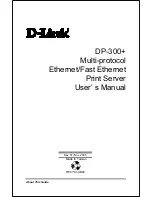
Setting up your work environment
18
Developing good work habits
The key to avoiding discomfort or injury from repetitive strain is to vary your activities. If
possible, schedule a variety of tasks into your working day. Finding ways to break up the
routine can reduce stress and improve your efficiency.
❖
Take short breaks from typing.
❖
Take short breaks to change position, stretch your muscles, and rest your eyes. A two
or three minute break every half hour is more effective than one long break after
several hours.
❖
Stretch spontaneously throughout the day to reduce tension.
❖
Avoid performing repetitive activities for long periods. Intersperse repetitive activities
with other tasks.
❖
To reduce eye strain, look away from the computer every 15 minutes or so, and focus
your eyes on a distant object for 30 seconds.
Arranging your work area
Carefully planned placement of your computer and desktop tools can help you avoid
stress-related injuries and make working more efficient. Adjusting the lighting can make it
easier to see your work and reduce eye strain.
❖
Place the keyboard on a flat surface, directly in front of you, at a comfortable distance.
When you use the keyboard, your arms and hands should be in a relaxed position
with your forearms parallel to the floor. You should be able to type without twisting
your body or neck.
❖
Place the monitor so that its top is at eye level. If you wear bifocal or progressive
lenses, position the monitor slightly lower.
❖
Adjust the screen to avoid reflections and glare.
❖
Set your paper holder at the same distance as the screen. If possible, adjust the
holder so that the paper is at the same height as the screen.
❖
Position the monitor so that sunlight or bright indoor lighting does not reflect off the
screen. Use tinted windows or shades to reduce glare.
❖
Avoid placing the monitor in front of a bright light that could shine directly in your eyes.
❖
If possible, use soft, indirect lighting in your computer work area.
Summary of Contents for Magnia 3310
Page 1: ......
















































